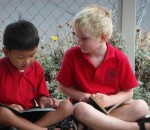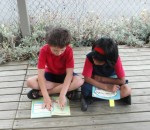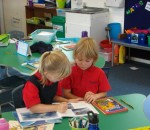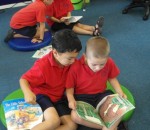Learning to Learn at St Joseph’s #L2L
One of the Principles of the New Zealand Curriculum is “Learning to Learn”.
“The curriculum encourages all students to reflect on their own learning processes and to learn how to learn.”
Building Learning Power
What are the main muscle groups for powerful learning?
– being inquisitive: asks questions, adventurous, developing interests and passions
–being resilient: determined, robust, patient, focused
–being imaginative: ingenious, looking for links, dreamy
–being rational: methodical, analytical, sceptical
–being reflective: self-evaluative, looking for transfer or connections
–relating: being a good collaborator, listener, empathiser
Most of us in our Primary and Secondary schooling will remember little about learning to learn. We will most likely remember being told what we had to learn as the” what” or “content” was the most important. Memorising was a highly praised skill and in order to pass exams, those who could memorise and regurgitate successfully often did very well!
In society, we have moved from an Industrial Age model (in which memory was highly valued) to a “knowledge age” or “knowledge economy” in which innovation is highly valued. Learners need to be able to deal with new situations and environments, learn to problem solve, to create new knowledge and deal with uncertainty and greater complexity. We know that people learn better by doing, being active participants – rather than by watching, being passive recipients.
We have a challenge in our schools, all of which have been set up under the Industrial Age model e.g. knowledge delivered by an expert; classrooms with rows of desks resembling a factory; bells being rung for beginning and end of day and lunch breaks; even the recent addition of standards reflects that model to a degree.
Although we have modernised our approach and have modernised the environment with the introduction of furniture that can be used more flexibly and increasing use of digital devices we continue to be challenged to truly develop our systems and practices so that we do prepare our children for the continually changing world in which we are living and working.
Our staff are building on the knowledge we already have and are learning more about changes we need to make in our thinking and practice in order to better reflect what is happening in education today and also what is expected for people living in the 21st Century.
Our replacement and refurbishment building programme is about to begin and the style of accommodation for learning will be radically different from what we have now.
If you are interested in this topic, I suggest you Google Modern Learning Environments to see some of the ideas that are already in place in schools in New Zealand and other parts of the world. Stonefields is one example in Auckland: http://www.stonefields.school.nz/ another is Hobsonville Point – both Primary and Secondary: http://www.hobsonvillepoint.school.nz/
Some of you may have had the opportunity to watch a programme recently, involving Nigel Latta investigating what kind of learning is happening in New Zealand schools today. You can view it on TV on demand (tv1) or follow this link: http://tvnz.co.nz/nigel-latta/s1-ep2-video-6037627
Our two Year 6 Netball Teams spent all day on Thursday at a tournament with one team encountering stiff competition at every turn and the other one more evenly matched with their opponents. They all gave of their best with a number carrying injuries and some battling being unwell. Some of the players were also called in to replace existing team members who were sick or away. They played well as a team and kept going despite the difficulties. A big thank you to their coaches Natalie Linstrom, Ingrid Young, the accompanying teacher, Alice Simmers and supporting parents.
Have a great weekend.
God bless!
Ka kite ano
Phil




